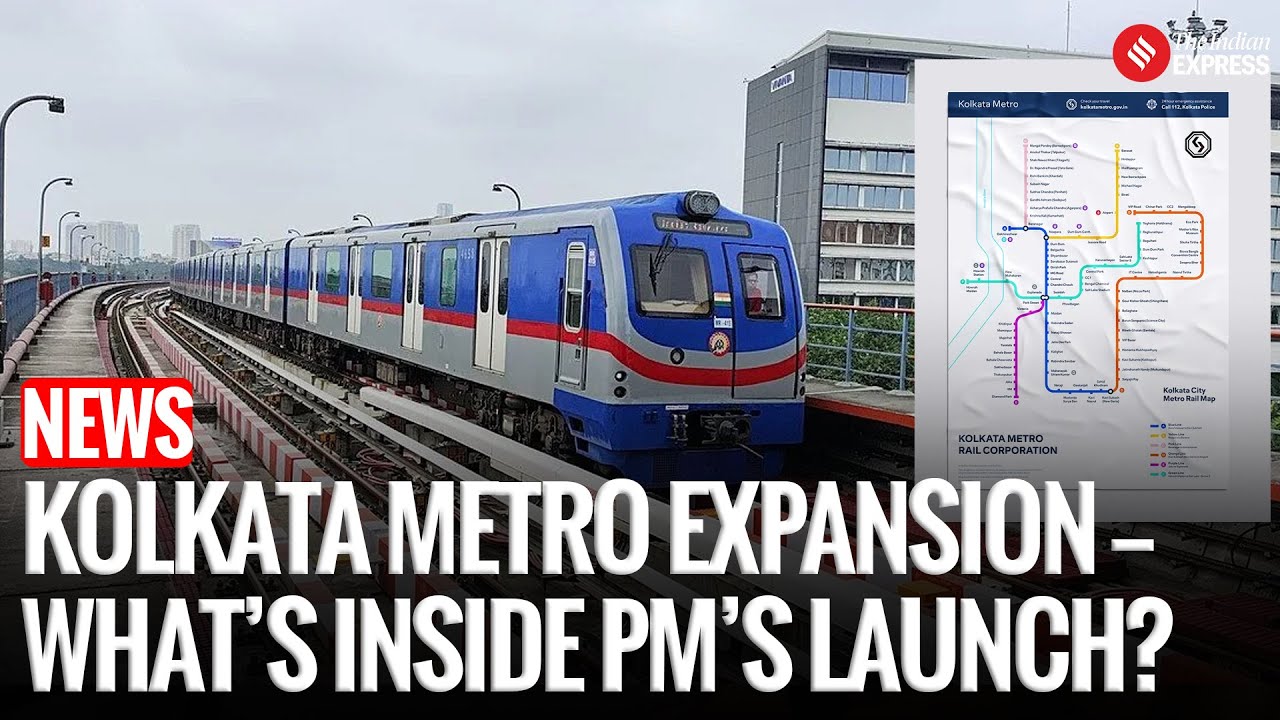The heartbeat of Kolkata has always been its trams, hand-pulled rickshaws, yellow taxis, and of course, its beloved metro. Often called the “Lifeline of Kolkata,” the city’s metro network has grown steadily over the years, providing relief to millions of commuters battling congestion. Recently, Kolkata witnessed a landmark development as three new metro routes were officially inaugurated, marking a historic expansion of India’s oldest metro system.
Chief Minister Mamata Banerjee, who played a key role in pushing for metro expansion during her tenure as the Union Railway Minister, could not resist sharing a nostalgic note on social media. Her post celebrated not just the growth of the metro network but also the memories of the struggles, vision, and determination that shaped the city’s transport infrastructure.
This development has been met with excitement, anticipation, and emotional reflections from Kolkata’s citizens, who see the metro not merely as a transport system but as a symbol of the city’s progress.
A Glimpse at the New Metro Routes
The three new routes opened to the public represent a major step toward transforming Kolkata’s urban mobility. Let’s break down the details:
- Joka–Esplanade Metro Line (Purple Line extension)
- Connects South Kolkata neighborhoods to the central business hub.
- Aimed at decongesting daily traffic in the Joka–Behala belt.
- Once fully operational, this route is expected to serve lakhs of commuters daily.
- East-West Metro (Salt Lake–Howrah Maidan)
- India’s first underwater metro tunnel under the Hooghly River.
- Connects IT hubs of Salt Lake with the heritage-rich Howrah area.
- Considered a technological marvel, this line will cut travel time significantly.
- New Garia–Airport Line (Orange Line)
- Direct metro connectivity between the southern suburbs and Netaji Subhas Chandra Bose International Airport.
- A game-changer for frequent flyers and office commuters.
- Reduces reliance on road transport to the airport, easing congestion on VIP Road and EM Bypass.
These three projects together represent one of the most significant phases of Kolkata Metro’s growth since its inception in 1984.
Mamata Banerjee’s Nostalgic Post
Shortly after the inauguration, Mamata Banerjee took to X (formerly Twitter) to pen an emotional note. She recalled her years as Railway Minister when she championed metro expansion projects for Kolkata.
Her post read like a trip down memory lane, mentioning how difficult it was to secure approvals, funding, and execution plans back then. She expressed pride that the seeds planted years ago were now bearing fruit.
Banerjee wrote about the “tears, sweat, and sleepless nights” that went into convincing policymakers about Kolkata’s need for an expanded metro network. She also highlighted her personal attachment to the metro, seeing it not just as an infrastructure project but as a lifeline for the city’s middle-class families.
Her nostalgic post resonated with many Kolkatans, especially those who have lived through the city’s transformation over the decades.
The Significance of This Expansion
1. Reducing Congestion
Kolkata is a densely populated city where road congestion has long been a daily challenge. The new metro lines are expected to take thousands of vehicles off the roads, providing faster and greener commutes.
2. Boosting Economy
By linking IT corridors, central business districts, and transport hubs, the metro expansion directly fuels economic productivity. Workers save time, businesses benefit from improved accessibility, and commercial real estate around metro stations gains value.
3. Environmental Impact
Metro trains, being electrically powered, significantly cut down on carbon emissions. Expanding the network contributes to Kolkata’s efforts to combat air pollution and promote sustainable mobility.
4. Heritage Meets Modernity
The East-West Metro’s underwater tunnel is not only an engineering achievement but also symbolic of how the city blends history with innovation. Passing under the Hooghly River, the metro connects the colonial-era Howrah with the modern IT hub of Salt Lake.
Public Response and Excitement
The launch has triggered a wave of excitement across the city. Social media is filled with photos, videos, and personal stories of commuters taking their first ride on the new routes.
For college students, office-goers, and frequent travelers, the new connectivity promises shorter commutes and less dependency on buses or autos. Senior citizens have expressed joy that areas once considered far-flung are now within easy reach.
Interestingly, the airport line has been hailed as a “dream come true” by travelers who have long struggled with unpredictable traffic on the way to flights.
Challenges Ahead
While the expansion marks progress, there are also challenges to address:
- Project Delays: Many of these routes took years longer than expected due to land acquisition hurdles, budget constraints, and technical challenges.
- Last-Mile Connectivity: Metro success depends on how easily commuters can reach stations. Lack of feeder buses and parking facilities remains a concern.
- Affordability: Although metro fares are relatively low, balancing financial sustainability and public affordability will be crucial.
- Maintenance & Safety: With expanded networks, ensuring top-notch safety, cleanliness, and operational efficiency is a continuous task.
Mamata Banerjee and the Metro Legacy
Mamata Banerjee’s deep connection with the Kolkata Metro is undeniable. During her railway ministry years, she sanctioned several new routes, including the ones inaugurated now. Her emotional post reflects a sense of vindication and pride, seeing her long-visioned projects materialize.
Political observers note that her message also subtly reinforces her government’s commitment to infrastructure development in West Bengal. With state elections in the coming years, showcasing such achievements could also carry electoral significance.
Kolkata Metro: Past, Present, and Future
- Past: Started in 1984 as India’s first metro system, initially covering a 3.4 km stretch from Esplanade to Bhowanipore (Netaji Bhavan).
- Present: Now boasts multiple operational lines, including the North-South Line, East-West Corridor, and expanding routes toward Joka and the Airport.
- Future: Plans include extensions toward Barasat, Diamond Harbour, and New Town, aiming to cover the broader Kolkata Metropolitan Area.
This steady expansion signals Kolkata’s ambition to match global metropolitan cities with efficient and sustainable transport.
Emotional Resonance: More Than Just a Train Ride
For many residents, the Kolkata Metro is not just about saving time—it’s tied to the city’s identity. From first college commutes to late-night journeys back from work, the metro has shaped countless personal stories.
Mamata Banerjee’s nostalgic reflection mirrors this emotional connection. The metro is woven into Kolkata’s cultural and social fabric, and every expansion deepens that bond.
Conclusion
The inauguration of three new metro routes in Kolkata marks a significant chapter in the city’s history. With faster commutes, eco-friendly operations, and world-class infrastructure like the underwater tunnel, the city is stepping confidently into the future.
Mamata Banerjee’s heartfelt note reminds Kolkatans of the journey it took to reach here—the battles fought, the vision upheld, and the perseverance required. Her nostalgia resonates because it is not just about political credit but about a shared dream for Kolkata’s progress.
As the metro expands, it promises to reshape how Kolkatans travel, work, and live. From Joka to the Airport, from Salt Lake to Howrah, the metro is no longer just a transport system—it is a symbol of the city’s evolving identity.

